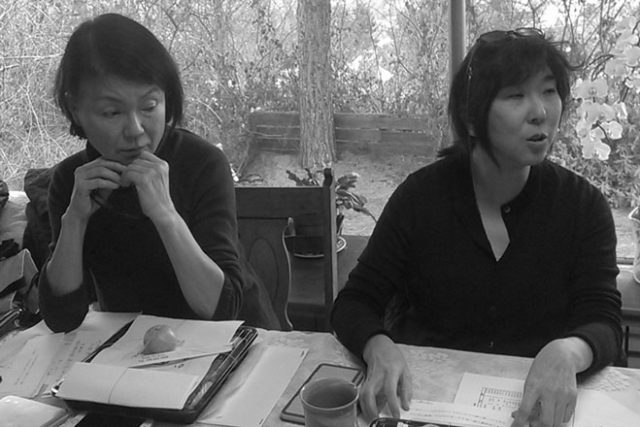By David Yamaguchi
The North American Post
To write for this paper is like being an ancient Makah lookout on Tatoosh Island, at the northwest tip of Washington. On some days, one might spy a treasure—a whale or a shipwreck—inland along the Strait of Juan de Fuca. On other days, such gifts might appear along the Pacific coast stretching far to the south. And so lookouts had to watch both inward and outward.
In this column, I mostly wander inland, examining the daily lives of Japanese Americans, who have been here for four-going-on-five generations now. However, now and then,
On Jan. 16, I had one such occasion when neighbor Toshiko Hoashi invited me to the monthly tanka-kai poetry meeting at the Tenrikyo Church on Beacon Hill (see related article, Sept. 1). The gathering would be a special one, as they would be serving a New Year’s lunch, including ozoni soup that Hoashi-san would be making. She did not have to ask twice.
To carry along all readers, it is useful to review what tanka poetry is. Conveniently, Seattle readers do not have to look far to do so, for two generations before me, JAs also wrote tanka. In “Nisei Daughter,” author Monica Sone’s mother Benko Itoi wrote in 1937 what may be the first published local tanka. She composed it in the Central District overlooking the Rainier Valley, from a vantage “straight across” from the Jose Rizal bridge that rises up to meet Beacon Hill over Dearborn Street:
“Kiri no yo no
Hodoro ni fukete
Samu zamu toh
Okibe no fune ka
Fue nali kawasu
“The fog-bound night
Ever deepening in somber silence
Tinged with chilling sadness
Could those be ships far off at sea
Echoing and re-echoing their deep
foghorns?”
Ms. Sone spells out the basic tanka formula for us: five lines totaling 31 syllables in a five-seven-five, seven-seven pattern, “never more, never less.” With this brief introduction then, let us return to the recent gathering.
The New Year’s tanka-kai was attended by ten women. Of these, a few are familiar to readers. They include Megumi Tanaka, the upbeat low-vision trading business entrepreneur (see New Year’s issue), Tokyo travel-writer Yukiko Tanaka, and butoh-dancer Aoi Lee. Several others have faces that are familiar from cultural gatherings like the Cherry Blossom Festival.
After a pleasant soup and bento lunch, accompanied with the pleasant chatter of friends getting together after the holidays, the group got down to business, reading and critiquing the 1-2 poems that each had written since the last meeting.
While much of the conversation (90% in literary Japanese) sailed over my head, there were two poems in the stack that made everyone laugh, and thus made good candidates for me to study at home over the next two evenings.
The simpler of these reads, approximately:
“山茶花の白いはなびら散りしきて末枯れゆく庭明るみにけり
“また少し視力衰へしかことさらに朝のメガネをていねいに拭く”
中野 薫
“Sanzamka no
shiroi hanabira
chiri shikite
sugure yuku niwa
akarumi ni keri
“Mata sukoshi
shiryoku otoroeshika
kotosara ni
asa no megane wo
teinei ni fuku”
—Kaoru Nakano
The sasanqua camellia blossoms disperse on the ground and lighten the withered garden.
My eyesight has been noticeably failing again, so I clean my glasses properly in the morning.
On later querying Ms. Lee, who had texted me information about her next butoh performance, she clarified—in amusing English+Japanese—that the “5-7-5-7-7 [pattern] is a fundamental form, but now we have a liberal idea. Moshi tanka no imi ga tsuyoku nari, tanka no melody ga smooth de areba OK desu.”
In short, she said if a poem’s meaning is strong and it reads smoothly, it is okay.
I came away from the gathering, and the nights following it, with two conclusions. First, the tanka-kai women are smart and funny, the kind that one would like to hang out with.
Second, tanka remains an art form best suited for native Japanese speakers, even more so than calligraphy. Like crossword puzzles for Americans, a vast vocabulary is needed to make it work.
Nonetheless, a lingering closing thought is that there remains something to be said for challenging ourselves, now and then, to see what we are capable of. While composing tanka is probably not in my future, I found it worthwhile to have spent three days learning something about it.


below Stacks of poems written since December Photos by David Yamaguchi







